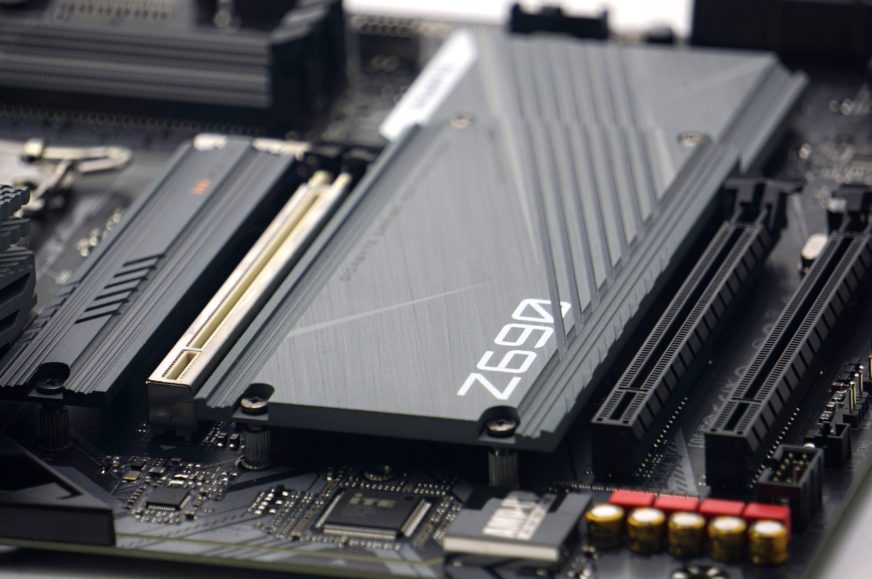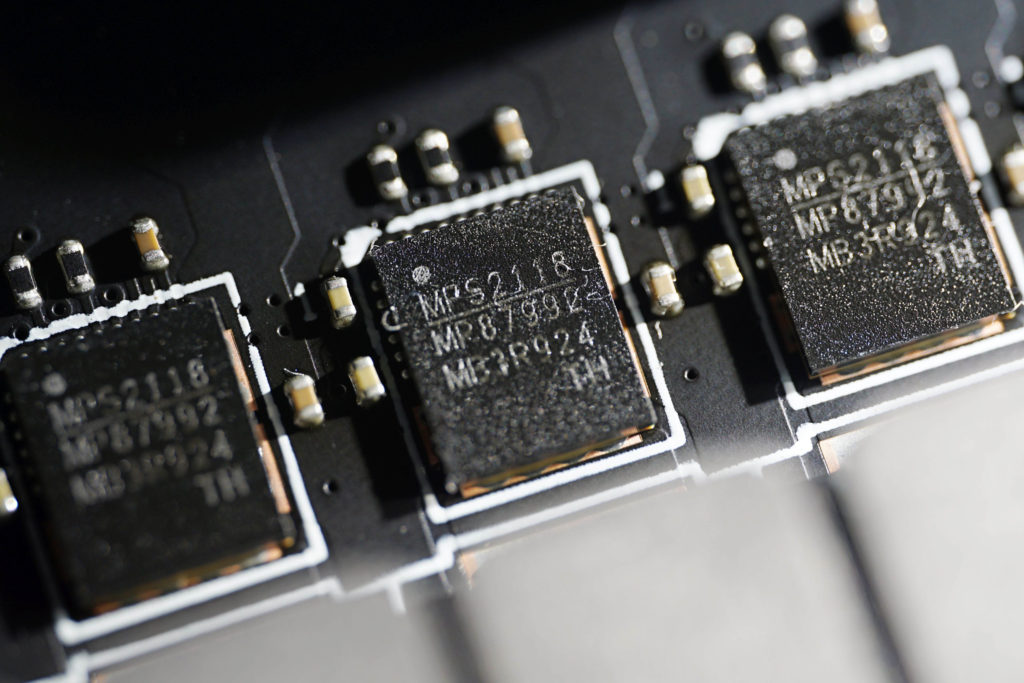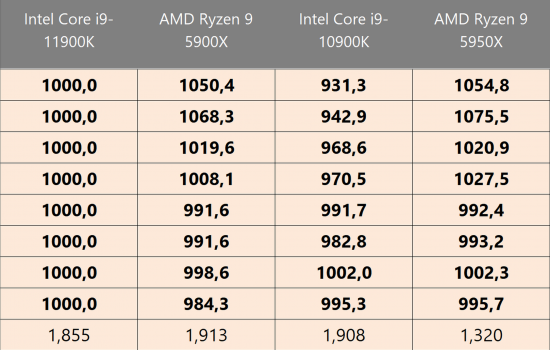... more efficient VRM does not equal lower power input
Over time, we have tested ten motherboards with Intel B660 and Z690 chipsets in great detail. From more than 5000 different measurements, we can thus confidently deny some speculations that are usually spread on the Internet from the ignorance of the authors of articles or comments (in discussions). But this is natural. The less substantial the reviews are, the more fertile ground they create for various confusions.
… more efficient VRM does not equal lower power input
In the context of measuring CPU power draw, there is one more thing you need to know. Namely, how big the difference in total power draw can be for the same computational (or gaming) power, which already includes VRM inefficiencies.
For this reason, we use sufficiently oversized boards so that the VRM efficiency does not cause significant differences between processors of different performance. However, VRM efficiency is not the only thing that determines what power draw you measure.
Boards with typically “strong” VRMs overdrive the power supply a bit in order to achieve the highest possible stability. Conversely, some boards with “weaker” VRM (with lower current carrying capacity) push it in the opposite direction. That is, the power supply is optimized to be as low as possible, so as to heat up the voltage regulators as little as possible for self-preservation.
A prime example is the Gigabyte B660 Aorus Master DDR4, with which the lowest power draw is achieved with the Core i9-12900K, although this motherboard does not have the most efficient VRM. It is much more efficient with the Asus ROG Z690 Maximus Hero with higher measured power draw.
In both cases, the difference in computational power is significantly less than the difference in input power. Hence, in processor tests it makes no sense to fixate on very small differences in power draw, these can vary from board to board and there is no way to fight with limiting this bias. But it is important to know about it, to be aware of it.
- Contents
- An examination full of new knowledge
- Possible differences in CPU performance
- Power draw under control...
- ... more efficient VRM does not equal lower power input
- Motherboards are also network, slots and...
- ... USB ports
- SSD coolers are good enough, but they waste material













Thanks for the article, quite interesting.
I wonder how much of a difference makes where the M.2 SSD is installed. I ask because the topmost slot is right above the GPU which under stress produces a lot of heat.
Would having the SSD on the lower slot make it considerably cooler?
https://www.hwcooling.net/en/what-s-the-best-position-for-your-ssd-m-2-en/ 🙂
Thanks. Those results make sense.